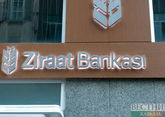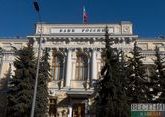The volume of bad assets has continued to grow in Russia's banking system. In recent years, it has more than doubled, according to the Russian Analytical Credit Rating Agency (ACRA).
"The number has increased from 1.6 trillion rubles (2014) to 3.8 trillion rubles," the head of ACRA's Financial Institutions Ratings Group, Kirill Lukashuk, said at a joint conference of the agency and the Moscow stock exchange.
He noted that there is a "long structural crisis" in the market. At the same time, the financial position of bad borrowers, with rare exceptions, does not improve.
Lukashuk also stressed that there are no economic obstacles to the transfer of bad but well-reserved loans from the balance of banks to the balance of any management company.
If the state decides to create the tool for it, there will be more advantages, he believes. According to Lukashuk, this step will reduce the operating costs of banks from working with such debts.
He particularly pointed to the growth of the state's share in the banking system and the risks of delaying the resolution of largest banks.
The head of the department of stock markets and financial engineering of the Faculty of Finance and the Banking Business of RANEPA, Konstantin Korischenko, speaking to Vestnik Kavkaza about causes for bad assets, noted that there was a two-fold change in the ruble exchange rate in the period of 2014-2017, due to which all currency assets doubled their volume in rubles.
"The second point is that in 2015-2016 there was a significant decline in GDP and overall credit activity in Russia, as well as a deterioration in the quality of bank balances," the expert said.
Commenting on ACRA's call to create a single infrastructure tool for dealing with bad debts, the economist noted that such an instrument already exists - the Fund for the Consolidation of the Banking Sector.
The vice-rector of the Academy of Labour and Social Relations Alexander Safonov, in turn, recalled that for a sufficient length of time the Central Bank had been engaged in withdrawing from the banking market and depriving of licenses those banks that lost their capital. "Since the crisis started, the process has started to increase. Those projects related to the construction of shopping centers and so on, were not in a great demand, so banks received illiquid assets, securities of companies that went bankrupt during the current crisis," the expert said.
"Bad assets are formed from credit commitments to ensure projects that were either unsuccessful or were used to withdraw assets when shareholders understood that the bank would be liquidated by a decision of the Central Bank. And of course, now it is not possible to realize these assets, they simply do not exist physically: either a project is unfinished, or these are projects are at the initial stage, but still not in demand by the market, or these are companies that have been bankrupt or are in a pre-bankrupt state," he listed.
Alexander Safonov drew attention to the fact that a single tool for working with bad assets would not be of interest to banks. "In part, it is already implemented in the form of individual deposits insurance and the protection of individual entrepreneurs' accounts. In fact, constructive discussion can only be conducted around a reserve insurance fund that would receive insurance payments from banks for a certain type of operation that are associated with the risks of non-repayment of loans, and then this fund would pay banks money and worked with bad debts," he noted.










